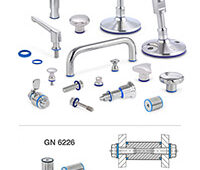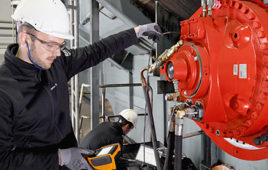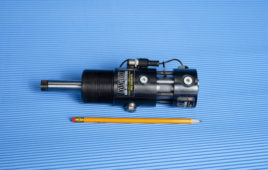Combining multiple technologies is one way to increase system versatility. For example, this electrohydraulic brake system combines the control flexibility of electronics and the power of hydraulics for a more versatile braking system. For on- and off-highway applications, the electrohydraulic system offers several advantages to traditional mechanical braking.
It replaces the traditional mechanical braking linkage and pressure-modulating valve with an electronic pedal and angle sensor, an electronic control unit and an electrohydraulic modulating valve (EHV). The angle sensor reads the brake pedal angle and sends an electrical signal to the electronic control unit (ECU). The ECU, which is programmable to set a vehicle’s braking characteristics, then passes current to the pressure-modulating valve that pressurizes the brakes. The output from the pedal angle sensor can also be shared with electronic engine controllers and transmission controllers for better vehicle performance.

The advantages include the capability of removing the modulating valve, with any associated noise, from the cab area and moving it closer to the brakes. This decreases the noise level in the cab, improving an operator’s work environment. It also reduces the amount of hydraulic line needed to power the brakes.
Anti-lock brakes and traction control can be implemented in conjunction with the electrohydraulic system for improved vehicle control. Electrohydraulic technology also allows inching control to be used to electronically control vehicle braking, especially in vehicles with hydrostatic transmissions. In this instance, the brake pedal serves two functions. The first function reduces the transmission’s power to the drive train, while the second applies power to the brakes.
Electrohydraulics can also be used in manual transmission vehicles. For vehicles stopped on an incline, the brakes can be programmed to hold the vehicle in place until enough throttle is applied to disengage the brakes. Such action ensures safety by not requiring the operator to depress the brake and clutch simultaneously to shift into gear.
The electrohydraulic brake system can also be used in vehicles controlled by remote or dual operator stations, including wireless stations.
MICO Inc.
www.mico.com
::Design World::
Filed Under: Brakes • clutches, Hydraulic equipment + components, FLUID POWER, Off highway • construction • agriculture





Tell Us What You Think!